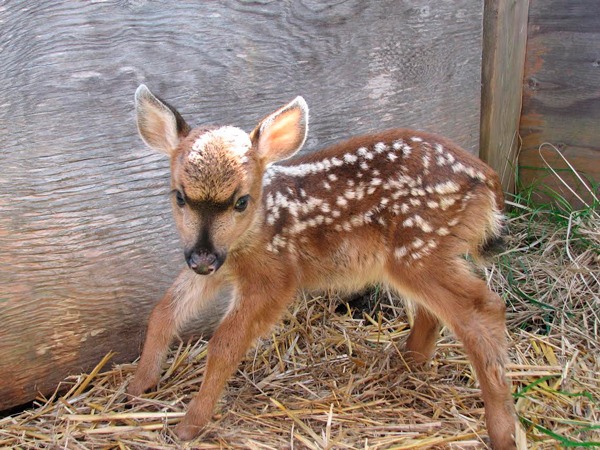by SHONA AITKEN
Wolf Hollow Wildlife
“Mommy, Mommy! Look at the cute little baby fox. He looks hungry. We should give him a cookie.”
There is no doubt about it, baby wild mammals are cute. Whether they are fluffy little raccoon or fox kits or delicate little fawns, they bring out the nurturing instinct in people, who then feel the need to get closer to them and feed and “care” for them.
Why is it a problem to directly feed young wild animals? It is all to do with what they are learning when they are youngsters. At this juvenile stage their parents are teaching them skills that will enable them to survive on their own in the wild for the rest of their lives, and they only have a few months to do it in.
If they are consistently and regularly fed by people, what do young wild animals learn?
They learn to beg for food rather than to forage or hunt. They quickly find out that it is easier to sit and look cute at the side of the road than follow Mom or Dad and learn how to catch mice. But what happens when the summer ends and there are fewer visitors, or someone moves away? The handouts stop and the youngster doesn’t know how to find natural food on its own. In the fall, young wild animals have to move out of their parents’ territory to find their own area to live in. What if there are no convenient human handouts available nearby?
They learn to trust people and be less wary. There are a lot of people who do not like raccoons, foxes or deer. A wild youngster that is not wary of people is much easier to injure or kill.
They learn to hang around roads and houses where there is a greater risk of being hit by a car or attacked by a dog.
They learn to expect handouts so they boldly walk into yards, onto decks or up to people. Young wild animals don’t stay small and cute for long. Even people who like wildlife are not too happy when a pushy young buck or a full grown raccoon won’t take no for an answer and seems to be a threat to their children or pets. They are then labeled “nuisance” animals and don’t tend to live long, happy lives.
It may seem harmless to give just one cookie to the cute fox kit or tempt the little fawn to nibble an apple right from your fingers, but how many other people have done the same thing? How long will it be before the little creature learns that people are a great source of tasty snacks and starts hanging around the house or the picnic area?
Next time you are tempted to feed a cute, little, wild animal, take a moment to ask yourself why you are doing it. Does the little animal really need the cookie or are you feeding it so you can get it to come closer and maybe get a cute photo? Consider the bad habits you are teaching it that might get it into trouble later. What is best for the youngster in the long-term? Maybe it is better to leave its parents to teach it how to find food, and all the other important things it needs to know to survive as a wild animal.




